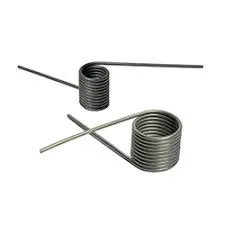
- Mobile Phone
- +8613931874955
- sales@cntcmetal.com
brick ties to metal studs
The Significance of Brick Ties to Metal Studs in Construction
In contemporary construction practices, the combination of traditional materials such as brick with modern frameworks like metal studs has gained significant traction. This synergy not only enhances the structural integrity of buildings but also addresses several practical aspects of design and implementation. Brick ties to metal studs play a crucial role in this hybrid approach, facilitating stability, durability, and energy efficiency.
Understanding Brick Ties
Brick ties are essential components used to connect brick veneers to the underlying structural framework. They ensure that the brick exterior remains securely attached, supporting the weight of the bricks and accommodating movement due to temperature changes. Traditionally, brick ties were made from materials like galvanized steel, which offers resistance to corrosion. However, with advancements in technology, various types of ties, including stainless steel and polymer-based options, have emerged, each catering to specific environmental conditions and structural needs.
The Role of Metal Studs
Metal studs have become a popular alternative to traditional wooden framing due to their lightweight nature and resistance to warping, insects, and decay. They offer greater precision in alignment and are capable of spanning longer distances without additional support. When integrating brick with metal studs, the advantages are manifold, particularly in terms of construction speed, cost-effectiveness, and sustainability.
Benefits of Brick Ties to Metal Studs
brick ties to metal studs

1. Structural Stability The primary function of brick ties is to ensure that the brick veneer is structurally sound and firmly anchored to the metal studs. This connection mitigates the risk of brick detachment due to wind loads or seismic activity, enhancing the overall safety of the building.
2. Flexibility The use of metal studs allows for greater flexibility in design. When paired with brick ties, architects and builders can achieve complex shapes and aesthetically pleasing facades without compromising structural integrity. This versatility can lead to innovative design solutions in modern architecture.
3. Thermal Performance By securing the brick to metal studs, builders can improve the thermal performance of the building envelope. The combination provides a buffer against temperature fluctuations, reducing energy consumption for heating and cooling. This allows for increased comfort for occupants and lower utility costs.
4. Low Maintenance Metal studs, in contrast to wood, require minimal maintenance over their lifespan. When tied to brick veneers, the need for upkeep is further reduced, making it a cost-effective solution in the long run.
5. Fire Resistance Metal studs are non-combustible, offering enhanced fire resistance compared to traditional wood framing. This property is vital in ensuring the safety of occupants and can lead to lower insurance premiums.
Conclusion
The integration of brick ties to metal studs stands as a testament to modern construction’s evolution, merging timeless aesthetics with cutting-edge technology. As the demand for sustainable, efficient, and aesthetically pleasing buildings rises, understanding the role of such connections becomes increasingly important for architects, builders, and developers. This synergy not only improves structural integrity but also supports the broader goals of energy efficiency and durability in today’s built environment. In summary, brick ties to metal studs are not merely functional components; they symbolize the harmonious blend of tradition and innovation in the world of construction.
share:
-
Wall Ties for Concrete: Invisible Guardians of Building Structural StabilityNewsAug.08,2025
-
Timber Frame Wall Ties: Stable Bonds for Load TransmissionNewsAug.08,2025
-
Stainless Steel Woven Wire Mesh: A versatile material from boundary protection to functional supportNewsAug.08,2025
-
Powder Coat Coil Springs: Creating peace of mind and reliability with sturdy protectionNewsAug.08,2025
-
Floor Standing Sign Holder: A Powerful Assistant for Flexible DisplayNewsAug.08,2025
-
Binding Iron Wire: An Invisible Bond for Building StabilityNewsAug.08,2025
-
Yard Sign Stakes: Reliable Guardians of Outdoor SignsNewsAug.04,2025



















